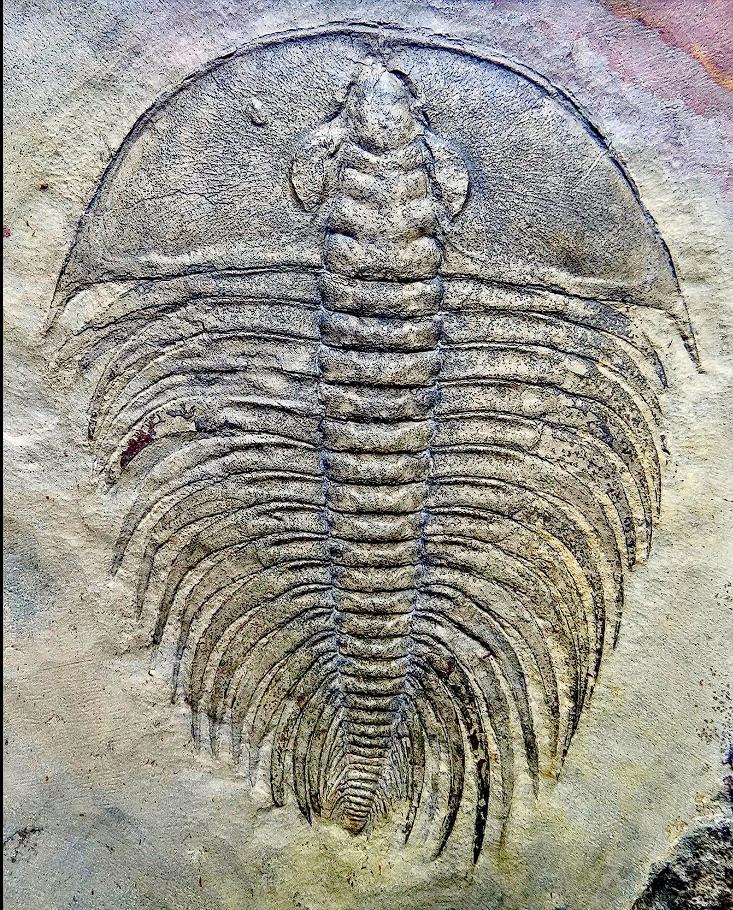Nevadia weeksi: The Trilobite That Carried Evolution in Its Veins
Picture a sun‑dappled Cambrian reef 520 million years ago: pillar‑like sponges sway in the currents, gelatinous comb jellies drift like living lanterns, and on the seafloor a four‑and‑a‑half‑inch armored scout named Nevadia weeksi patrols the sediment. At 11.8 cm long, this trilobite is an early ambassador of complex animal design—small, but packed with evolutionary firsts.
A Vascular Map Written in Stone
Most trilobite fossils preserve the hard outer shell; Nevadia weeksi offers something rarer. Fine, vein‑like impressions lace its headshield—the fossilized traces of a circulatory network that once pulsed with hemolymph. In one stroke, this tiny creature records a leap from simple diffusion to organized fluid transport, a prerequisite for building larger, more energetic bodies.
Life on a Primordial Seafloor
Unlike later trilobites that dominated Ordovician seas, Nevadia belonged to the Cambrian’s experimental cast. Its low, streamlined profile hints at a lifestyle of scuttling across microbial mats, probing for detritus while avoiding the grasp of early predators such as Anomalocaris. In that ancient theater of arms races and innovation, vascular plumbing gave Nevadia a physiological edge.
Why This Fossil Matters Today
Hold a trilobite like Nevadia weeksi in your palm and you cradle a blueprint of multicellular ambition. Every artery, every vein foreshadows the cardiovascular highways of later arthropods, fish, reptiles—and eventually humans. The story etched in its shell reminds us that complexity bloomed early, setting the stage for the entire animal kingdom.

CÁC TIN KHÁC
Mary Walton: The Forgotten Inventor Who Helped Clean Up America’s Cities
Tomb of Queen Nefertari in the Valley of the Queens, Egypt
Discover the Hypostyle Hall of the Temple of Hathor at Dendera
Venus de Losange: Unveiling the Mystery of a 20,000-Year-Old Paleolithic Icon